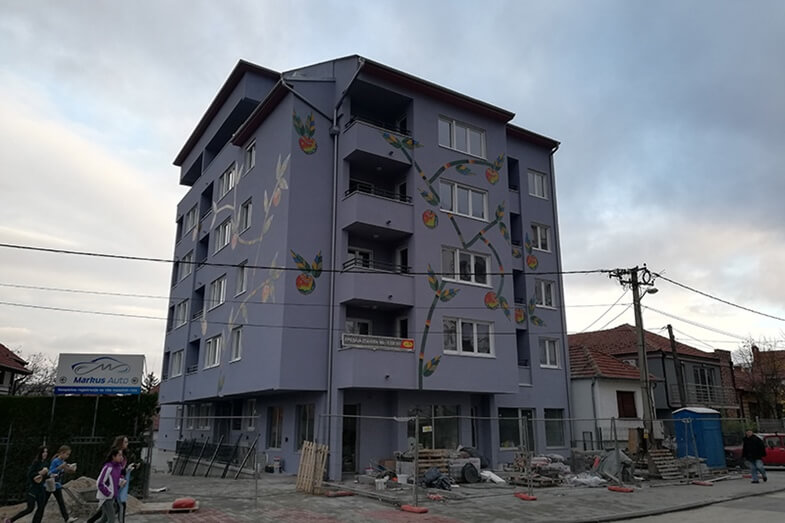
Rešili ste da kupite stan. Na kredit. Da, na kredit. Ma koliko kredit u našem narodu važio za moderno „dužničko ropstvo“, on je često jedini način da dođete do sigurnosti i sopstvenog doma. Kupovina na kredit je potpuno legitimna investicija na dugi rok, za koju se – kao i za sve ozbiljnije životne poduhvate – valja pripremiti. U ovom tekstu pokušaćemo da pojasnimo neke osnovne bankarske pojmove na koje ćete nailaziti u potrazi za kreditom po meri. Počnimo sa osnovim pojmovima :
- Kreditna sposobnost je prvo što banke ispituju kada zatražite kredit. To je u stvari vaša finansijska sposobnost kao dužnika da po dospeću vratite uzeti kredit, uvećan za iznos pripadajuće kamate.
- Kapara je uplata dela kupoprodajne cene koju vrši kupac direktno Investitoru , a kao garanciju da će izvršiti uplatu preostalog dela kupoprodajne cene u budućnosti. Većina banaka zahteva minimalnu kaparu odnosno učešće od 20% od vrednosti predmetnog stana koji kupujete.
- Glavnica je osnovni, pozajmljeni iznos, koji je dužnik dužan poveriocu i na koji se obračunava kamata.
- Anuitet je isto što i rata kredita tj. redovna, najčešće mesečna, isplata, koju klijent plaća banci na ime otplate kredita. Visina rate kredita i rok u kome će dospevati za naplatu su sadržani u Planu otplate kredita koji banka daje klijentu pri potpisivanja Ugovora o kreditu.
- Grejs period (period odložene otplate) je period u kome je kredit stavljan na raspolaganje klijentu, a njegova otplata još nije počela. To je period između isplate kredita i dospeća prve rate. Grejs period može trajati od nekoliko meseci do nekoliko godina.
Panorama Erdoglija
Samo onaj ko je kupovao stan na kredit zna koliko je strpljenja potrebno da se pronađe odgovarajući stan, a onda još dodatnog strpljenja ako se odluči za dugovanje banci u narednim godinama. Upravo zato što se radi o velikim iznosima, ali i dugim rokovima otplate potrebno je mnogo vremena i truda da bi se izabrao pravi kredit.
- Kamata je naknada koja se plaća za korišćenje sredstava banke. Ova cena korišćenja se izražava u procentima i naziva se kamatnom stopom. Njena visina zavisi od vrste kredita, roka na koji banka ustupa sredstva klijentu, obezbeđenja naplate potraživanja (hipoteka,,jemstvo…), uslova na tržištu, konkurencije …
- Efektivna kamatna stopa (EKS) je kamatna stopa koja prikazuje koliko kredit klijenta stvarno košta, odnosno kolika je ukupna cena kredita. Na visinu efektivne kamatne stope utiče, osim redovne kamatne stope, i visina naknada koje klijent plaća banci prilikom odobrenja kredita, dužina otplate kredita, visina eventualno potrebnog učešća itd.
- Zatezna kamata je kamata koja se naplaćuje ukoliko klijent nije ispunio ugovorne obaveze u roku koji je predviđen Ugovorom o kreditu. Njena visina se obično reguliše zakonskim propisima o zateznoj kamati.
- Euribor (Euro Interbank Offered Rate) je referentna kamatna stopa po kojoj su banke spremne da pozajme jedna drugoj novac – evro. Kod nas ga banke koriste kako bi se utvrdile kamatne stope na različite finansijske proizvode kao što su: hipoteka, štedni računi i krediti. Predstavlja deo kamate (tačnije, na kamatnu stopu se dodaje vrednost Euribor-a) za kredite dobijene u evrima. Vrednost Euribor-a je promenljiva

Nizak euribor smanjio i kamate na zajmove za kupovinu nekretnina, ali potencijalni kupci imaju i niz drugih izdataka koje ćemo navesti u tekstu koji sledi . Dobijanje kredita podrazumeva i plaćanje učešća, troškova obrade kredita, premije osiguranja kod NKOSK, životnog osiguranja, periodičnih procena nekretnine, upisa hipoteke, osiguranja nekretnine, overe založne izjave…
- NKOSK (Nacionalna korporacija za osiguranje stambenih kredita) je korporacija koja osigurava kredite koje banke odobravaju fizičkim licima za kupovinu nekretnina, a koji su obezbeđeni hipotekom. Preuzimanjem dela rizika, Korporacija snižava ukupan rizik banke, što utiče na smanjenje kamatne stope koju banka naplaćuje svom klijentu.
- Sredstva obezbeđenja predstavljaju jedan od načina na koji banka obezbeđuje uredno vraćanje kredita. U zavisnosti od iznosa i vrste kredita, banka određuje potrebno obezbeđenje. Najčešće su u pitanju sopstvene menice i hipoteka na nekretnine u korist banke. Hipoteka se upisuje na nepokretnost koju klijent kupuje ili neku drugu nepokretnost u vlasništvu klijenta.
- Hipoteka je založno pravo na nepokretnosti koje ovlašćuje poverioca da, ako dužnik ne isplati dug u dospelosti ili ako dođe do povrede druge obaveze koja aktivira hipoteku, zahteva naplatu potraživanja obezbeđenog hipotekom iz vrednosti nepokretnosti.
- Menica je dokument, izdat u strogo zakonskoj formi, u kome se izdavalac obavezuje da će u roku isplatiti određeni iznos, ili poziva drugo lice da izvrši tu isplatu. Blanko menica je neispunjen menični obrazac snabdeven potrebnim potpisima i zakonski može postati menica čim se ispune ostali bitni podaci.
Na kraju je ostalo da razjasnimo još par pojmova koji su za većinu „španska sela“ i pokušavamo da vam približimo o čemu se tu zapravo radi…
- Žirant je osoba koja garantuje uredno varaćanje kredita na taj način što se obavezuje da će, ukoliko korisnik kredita ne bude ispunjavao svoje obaveze, nastaviti izmirivanje ovih obaveza.
- Jemstvo je način osiguranja plaćanja nekog duga kod koga se treće lice obavezuje da će poveriocu u određenom roku platiti dug dužnika pod određenim uslovima. Jemac je gotovo ista kategorija kao i žirant.
- Refinansiranje kredita je jedan od načina da se prevaziđe problem u otplati kredita. Ukoliko primanja klijenta nisu dovoljna za plaćanje obaveza po osnovu uzetih kredita, refinansiranje obaveza podrazumeva mogućnost da jednim kreditom (kreditom za refinansiranje) na duži rok i sa manjom mesečnom ratom objedni sve postojeće obaveze.
Svi objekti koje Grading gradi su uknjiženi i kupcima je omogućena kupovina stanova putem stambenih kredita . Grading uspešno sarađuje sa svim bankama na našem tržištu.
Domaće banke kod stanova u izgradnji odobravaju kreditena stanove u izgradnji kada je nepokretnost završena 80%. Nakon toga sledi izlazak na teren ovlašćenog procenitelja koji konstatuje stepen završenosti i vrši procenu stana. U tom periodu kupac prikuplja dokumentaciju i potpisuje ugovor o kreditu sa bankom , posle čega sledi overa založne izjave kod Notara i upis hipoteke u Katastar Nepokretnosti. Kada sve ovo bude završeno , zaseda kreditni odbor banke koji nakon provere ispunjenosti svih uslova plasira kredit prodavcu stana.
Time se završava jedan veliki process, kupci dobijaju ključeve i mogu početi sa sređivanjem i opremanjem svog novog doma.







